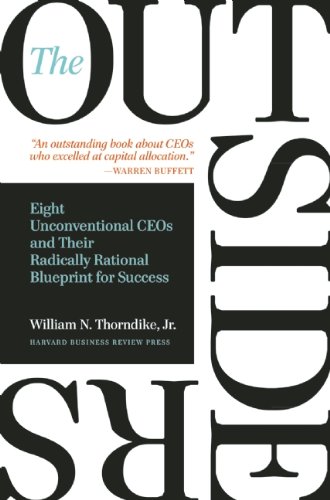

This article is an excerpt from the Shortform summary of "The Outsiders" by William N. Thorndike, Jr. Shortform has the world's best summaries of books you should be reading.
Like this article? Sign up for a free trial here .
What is insurance float? How does insurance float work, and who uses it?
Insurance company float is money that the company holds onto between receiving premiums and paying out claims. Warren Buffett famously made use of this money, and invested it for higher returns.
Read on to find out how Warren Buffett used Berkshire Hathaway float.
What Is Insurance Float?
Insurance company float is money the company receives in premiums before they are paid out as claims. The time gap can be many years. In essence, this is like getting cash at 3% to reinvest at 13%. A big part of Berkshire’s investment strategy is its use of low-cost insurance float to invest in higher-return businesses.
Over the years, Berkshire continued scaling up the strategy in an accelerating flywheel effect. He could use insurance float to purchase companies that generated cash flow, which in turn he could use to buy more insurance companies, which generated more float to purchase companies. Insurance float grew from $237 million in 1970 to $70 billion in 2011.
As a large diversified company, Buffett also had more control over his insurance companies’ underwriting to maximize profitability. When premium pricing was low, Buffett’s insurance companies would underwrite fewer premiums; when pricing was high, it would take advantage by underwriting multiple-fold more in premiums. For instance, between 1984 to 1986, premiums grew sixfold, then shrank 73% by 1989. It’d be difficult for an independent public insurer to do the same, since its investors expect smooth performance.
Warren Buffett has earned staggering returns over the 50-plus year history of Berkshire Hathaway. Starting with buying a textile company in 1965, Buffett grew Berkshire Hathaway into one of the world’s largest companies. Part of this strategy was using Berkshire Hathaway float money to reinvest.
Over the years, Buffett excelled in all manners of investments—in both public and private companies, with ownership of both minority and total stakes. He famously made use of insurance company float to fund investments in higher-return companies, held a small basket of companies for very long periods of time, and acted aggressively when everyone else was ducking for fear.
How Does Insurance Float Influence Investing Style?
Having had extensive experience in investing before starting Berkshire Hathaway, Buffett had a wider range of investment options than most CEOs. Typical CEOs only look within their immediate industry. In contrast, Buffett has made investments in a vast array of industries (from beverages to industrials). Plus, with the innovative use of insurance company float, Buffett was always able to continue looking for investments.
Buffett is remarkably quick at making a purchase decision. He spends less time on due diligence and often makes deals within days. He never visits company locations and rarely meets management. He can move quickly because he only invests in industries he knows deeply, and he has honed his investment criteria. This lets him filter the key performance indicators of a business.
Buffett also avoids auctions, believing they drive up valuation needlessly. He prefers that owners call him and offer a price, with Buffett returning his answer within 5 minutes.
Buffett’s usage of insurance float and his investing style paid off. From 1965 to 2011, Berkshire Hathaway showed a 20.7% annual return rate, compared to 9.3% for the S&P 500.
$1 invested at the beginning would have been worth $6,265 by 2011. This outperformed the S&P by a staggering 100 times.
The use of Berkshire Hathaway float has undoubtedly increased the value of the company. Insurance float is certainly a risk, but has clearly paid off for Warren Buffett.

———End of Preview———
Like what you just read? Read the rest of the world's best summary of William N. Thorndike, Jr's "The Outsiders" at Shortform .
Here's what you'll find in our full The Outsiders summary :
- What great CEOs like Warren Buffett do that average CEOs don't
- How to master the art of capital allocation
- How to be a great manager that your team is excited to work with






